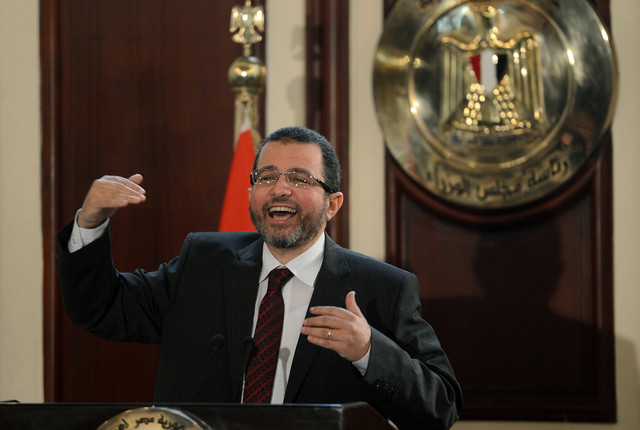Like other countries worldwide, the Egyptian government has had to take significant steps to ensure that the country faces up to the economic impacts of the coronavirus (COVID-19) pandemic. In an interview with Daily News Egypt, International Monetary Fund (IMF) Egypt Mission Chief, Uma Ramakrishnan, evaluates the measures taken by the government of Egypt to face the pandemic’s impacts on the country.
The challenge is to ensure these measures are transparent, targeted, and temporary such that they address critical areas of social and economic need, and can be rolled back as conditions normalise, says Ramakrishnan
How do you assess Egypt’s handling of the pandemic’s economic impact?
The Egyptian authorities launched a comprehensive response to contain the economic impact of the shock. Fiscal, monetary, and financial measures were announced to increase health sector allocations, cushion the directly impacted sectors, and expand support to the poor and vulnerable. The Central Bank of Egypt (CBE) initiated measures to ease pressures in domestic liquidity and credit conditions. The challenge is to ensure that these measures are transparent, targeted, and temporary such that they address critical areas of social and economic need, and can be rolled back as conditions normalise.
Do you think Egypt needs further monetary easing?
The CBE takes a data-driven to monetary policy, based on anchoring inflation expectations to maintain inflation with the target range of 9% (±3%). The scope for further monetary easing will depend on the extent to which inflation expectations remain well-anchored in this target range, taking into account economic and financial conditions that will have an impact on expected future inflation.
Can fiscal stimuli cushion the impact of the coronavirus in Egypt, the region, and globally?
The shock from COVID-19 has had a significant impact on lives and livelihoods around the world, and Egypt has not been spared in that respect. The policy space, or what we call buffers, built over the past several years has left Egypt in a strong position to weather the crisis, but the sudden disruption to economic activity from the pandemic has been significant. Fiscal stimulus in Egypt has been designed to forcefully tackle the immediate health crisis and provide targeted support to the most-affected sectors, and the most vulnerable parts of society. This should help to cushion the disruption and—in combination with a strong policy framework—should leave Egypt well-positioned for a robust recovery as conditions normalise.
Does Egypt need further reforms?
Egypt’s bold and home-grown economic reform programme during 2016-2019 made significant progress in achieving macroeconomic stabilisation. The next wave of structural reforms – the seeds for which have been already laid – will help sustain strong and inclusive private sector-led growth and job creation while further reducing poverty. Deepening and broadening reforms that were begun in 2016 by the authorities, and supported by the IMF Extended Fund Facility (EFF), to enhance governance and transparency of state-owned enterprises, improve competition, and facilitate trade are critical for enabling private sector participation.
How do you view Egypt’s debt-to-GDP levels, especially after the recent loans?
High levels of public debt and large financing needs create vulnerabilities relative to changes in global financial conditions. This is an important topic that is also being discussed by the G20.
Let me also take a step back to explain a bit more. Prior to the pandemic, the authorities had made significant progress in reducing public debt – it fell from 103% of GDP in June 2017 to 84% in June 2019. But with COVID-19, like in other emerging markets, considerable stress has been put on public finances. Tax revenues are lower and spending is higher, particularly to support essential medical and social spending and impacted sectors. Thus, borrowing has increased in Egypt, which means that debt is likely to rise to about 93% of GDP by the end of fiscal year (FY) 2020/21. As conditions begin to normalise, it will be essential to put public debt back on a downward path.
Does the latest IMF financial facility need Egypt to adopt new economic or structural reforms?
The IMF Stand-by Arrangement (SBA) aims to maintain macroeconomic stabilisation while continuing to advance structural reforms to safeguard the gains achieved over the past three years and put Egypt in a strong footing for sustained recovery after the crisis. Policies underlying the SBA will support achieving these objectives, including by supporting the necessary health spending, social programmes, improving governance and transparency of state-owned enterprises, and enabling private-sector-led growth and job creation streamlining the customs law to ease doing business, and strengthening the competition law to help level the playing field for public and private market participants.
What about the payment period, the reimbursement, or the date of delivering the first tranche?
IMF Stand-by Arrangement is for 12 months at an amount of $5.2bn. All details related to the arrangement are pending the IMF Executive Board approval.
And what about the first loan of $2.8bn?
The IMF Rapid Financing Instrument was a single payment, or what we call “purchase”, for $2.8bn with no conditions attached to it. The repayment period for both the RFI and the SBA is between 3.25 to 5 years.








